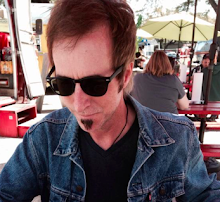We live in the future. And you know
it's true. This past weekend I was watching some reruns of shows from my
childhood. I saw the Jetsons. I saw Star Trek. And that's when it occurred to
me, we live in the future.
I watched as Mr. Spacely called
George Jetson on his television. Well that's what we thought it was at the
time. Little did we know that there would be Skype, Google Hangouts and
FaceTime that would allow us to talk to someone face-to-face miles away or just
around the corner. We can now see and converse with others without leaving our
homes. Without leaving our offices. At the
convenience of the caller and at the convenience of the one we called.
I saw Star Trek. And I'm sure it's
occurred to you before now, that the “communicator” in the hand of Mr.
Spock or Captain Kirk was actually a lot like a smartphone. Spock’s ability to
turn that handheld device into something that would read the environment or Dr.
McCoy’s ability to use it or something like it to scan a body was beyond
belief. Now we have apps that power our iPhones and Android devices to do
similarly futuristic things.
Look, it's easy to get bogged down in
the rules and regulations of an industry. They're there to protect us all.
Comply. But what if we allow our imaginations to lead for a minute as relates
to the part of doctoring that really matters to us most, patient engagement.
We'd find ways to connect with those
who can't get from their homes and to our offices.
What if we find ways to empower
patients to tend to themselves, to know more about the environment that they're
in and how it affects their health?
We'd have smarter patients and better
health outcomes.
Okay enough of the hyperbole it's
time to get real. We live in the future. But we practice too much in the past.
So here's what a savvy doctors going
to do this year: tap into that Jetsons television thing and enable patients or
colleagues to communicate via Skype or Apple’s FaceTime to explore what
needs to be explored.
My twitter-friend Dr. Howard Luks
(@HJLuks on Twitter) says that he finds this approach to telemedicine useful in
consulting with his patients and would invite conversation, by FaceTime no
doubt, with doctors who might be trying to find their way toward the future.
Speaking of exploration, savvy
doctors will learn how to use mobile devices and apps that run on them to help
patients communicate with their doctor and to help the patient and doctor know
more about the environment that they are in and how such circumstances
affect their well-being.
Last March I met Dr. Daniel Kraft, MD
(@daniel_kraft on Twitter) at SXSWi (South by Southwest Innovation conference).
He was there to speak on health care innovation powered by smartphones. It was
cool. And it would have seemed like “future talk” were it not for the number of
people in the room already using one
or more of the diet, exercise, sleep monitoring, cardio, diabetes and anxiety
management apps he spoke of there.
Look, George Jetson would get out on the
now ever so commonplace treadmill to exercise his dog. Maybe this is the year
to exercise your medical practice. Maybe this is the time to rethink patient
engagement so that we can get off this crazy thing called the status quo and
into the future. Some of us are already there.
